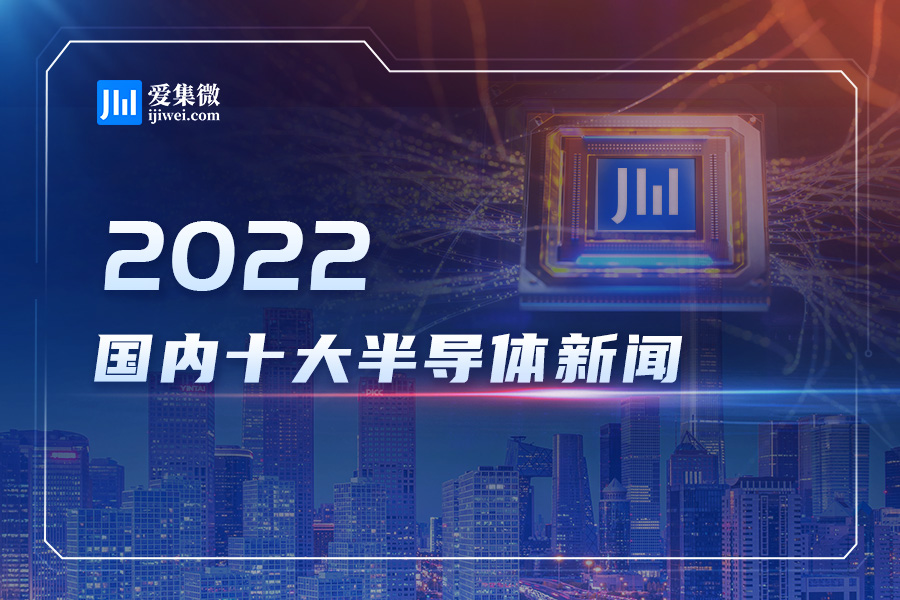

1. China's semiconductor industry maintains resilient growth momentum against headwinds
Facing unprecedented geopolitical pressure and challenges in 2022, China's semiconductor industry is growing steadily against headwinds.
JW Insights’ “Research Report on 2022 China’s Top 100 Semiconductor Companies ” shows that the total revenue of China’s top 100 semiconductor companies reached RMB269.9 billion($38.65 billion) in 2022, a year-on-year increase of 3.5%, of which 54 companies have revenue growth of more than 5%. The revenue threshold for the list entry of the top 100 companies increased from RMB300 million ($43 million) in 2021 to RMB450 million ($64.4 million) in 2022. The top ten companies’ threshold was up from RMB7 billion ($1 billion) in 2021 to about RMB7.5 billion ($1.074 billion) in 2022.
In addition, data from the CSIA-ICCAD - China's design industry trade organization - shows that the 2022 number of IC design companies in the country at 3,243, up 15.4% year on year, with expected industry sales reaching RMB534.57 billion ($76.62 billion) in 2022, an increase of 16.5%. Twenty-five design companies have achieved IPOs this year as of December 26.
Although the global semiconductor industry shows a downward trend in 2022, China's semiconductor industry still maintains firm confidence, with the support of government policies and huge Chinese market size.
2. The number of listed semiconductor companies hit record highs, with semiconductor concept stocks taking shape
Thirty-seven semiconductor companies were listed on the A-shares market in 2022, nearly doubling the number from 2021. The total number of A-share semiconductor listed companies to hit new highs of more than 160, covering design, materials, equipment, manufacturing, discrete devices, and other sectors in the industry chain. Under a steady progress of the stock registration system, semiconductor concept stock has taken shape.
3.The market value of semiconductor companies has shrunk, with the capital market downturn bringing the primary and secondary markets to a low ebb
Since the beginning of 2022, the market value of semiconductor companies started to shrink in the cold capital market as with market slowdowns. JW Insights data shows that the A-share semiconductor index has fallen by nearly 29.7% from the beginning of the year, with some listed companies’ market value being cut in half. Even with 37 newly listed semiconductor companies in 2022, the entire A-share semiconductor market's total market value has dropped more than 13%. The secondary market downturn in semiconductor stocks has also affected the primary semiconductor market, with cold investment.
4.China's anti-corruption campaign reached the IC industry with several top executives under probe
Since July, 2022, the national supervision department has continuously strengthened its anti-corruption drive, and several executives related to the Chinese government's investment fund known as "the Big Fund" have been sacked. They include Lu Jun, the former deputy director of the development fund management department of the China Development Bank, Ding Wenwu, the former general manager of the Big Fund, and Du Yang, the former director of SINO-IC Capital. In addition, some executives like Zhao Weiguo, the former chairman of Tsinghua Unigroup, were also under probe.
5.China continues favorable policies for the IC industry, stimulating innovation and vitality
In the first half of 2022, over 20 provincial and municipal governments incorporated IC, semiconductors, high-end chips, bottleneck, and independent innovation as hot words in their work reports.
Automotive chip was one of the hot topics of China’s annual Two Sessions of policy makers, namely the NPC and CPPCC in March. Among them, auto chips shortage and localization of auto chips aroused heated discussions, and many NPC deputies offered suggestions.
Technology and innovation were also high-frequently-used words in the Report to the 20th National Congress of the Communist Party of China, released on October 25. The report refers to building new generations of IT, AI, biotechnology, new energy, new materials, high-end equipment, and environmental protection as new growth engines.
In 2022, more than 30 special policies for integrated circuits were issued, covering important IC regions like the Yangtze River Delta, Pearl River Delta, and Beijing-Tianjin-Hebei Region. Shanghai, Zhuhai, Hangzhou, and Xiamen have offered relatively high subsidies for projects and companies in tape-out, EDA/IP, packaging and testing, and equipment materials sectors.
6.The East-to-West Computing Resource Transfer Project is initiated to concentrate computing in eastern and coastal China and allocate data in western China
In February 2022, the National Development and Reform Commission (NDRC) and other central government departments jointly issued a document agreeing to build eight national computing hubs in Beijing-Tianjin-Hebei Region, the Yangtze River Delta, the Guangdong-Hong Kong-Macao Greater Bay Area, Chengdu-Chongqing Area, Inner Mongolia, Guizhou, Gansu, and Ningxia. There is also the plan to approve ten national data center clusters. Together these projects are called "The East-to-West Computing Resource Transfer Project," designed to adjust the allocation of computing power resources across the country, addressing the long-standing issues of high energy consumption of data centers, insufficient utilization of data resources, and uncoordinated regional development.
7. Mature IC manufacturing processes see large-scale expansion in the Chinese mainland, including foundry services, CIS, and MEMS
In 2022, companies in the Chinese mainland keenly expanded the production of mature manufacturing processes, covering foundry services, CIS, and MEMS.
Cansemi (粤芯半导体) launched its third-phase project, with a planned monthly production capacity of 40,000 pieces; SMIC (中芯国际) announced to construct a 12-inch wafer production line in Tianjin, with a planned monthly production capacity of 100,000 pieces. In addition, its 12-inch production line project in Lingang, Shanghai, has hung the steel beams of the main building, with a monthly production capacity of 200,000 pieces; China Resources Micro (华润微) started constructing its 12-inch IC production line in Shenzhen, with an annual production capacity of 480,000 pieces; HHGrace (华虹宏力) filed a listing application with the Shanghai Stock Exchange, and would use the raised RMB18 billion ($2.6 billion) to invest in its manufacturing project in Wuxi of eastern China’s Jiangsu Province and others; Zensemi (增芯科技) announced to build a 12-inch MEMS manufacturing line with a monthly production capacity of 20,000 pieces.
8. Merges and acquisitions kick off in the EDA sector and more expected to in the whole industry in next two years
There were two major mergers and acquisitions (M&A) deals in China's EDA industry in 2022, including X-EPIC (芯华章) integrating Shunyao (瞬曜电子) and Empyrean Technology(华大九天) acquiring XinDA Design Automation Limited (芯達科技). The two cases bear the pattern of companies with a broader product line acquiring smaller companies that are competitive in specific areas.
In addition to the EDA sector, more M&A are expected in n the next few years in the country's semiconductor industry, with leading players in various segments to become bigger and stronger gradually.
9. Chinese semiconductor conglomerate Unigroup completes its bankruptcy reorganization by the consortium of Wise Road Capital and JAC Capital with RMB60 billion ($8.63 billion)
In July 2022, the bankruptcy reorganization case of Chinese semiconductor conglomerate Unigroup (紫光集团) came to an end. The consortium of Wise Road Capital (智路资本) and JAC Capital (建广资产), invested RMB60 billion ($8.63 billion) in cash support and take over the debt-ridden Unigroup.
Zhiguangxin Holdings (智广芯控股), the company formed by Wise Road Capital, undertakes 100% of the equity of Unigroup, marking the completion of the shareholding rights transfer.
Later, Unigroup’s new board of directors appointed Li Bin as its new chairman, replacing the former Zhao Weiguo.
10. New series of US export restrictions hurt China’s chip industry, causing a new wave of layoffs especially in US semiconductor companies in China
The US Department of Commerce's Bureau of Industry and Security (BIS) issued new export restrictions against the Chinese mainland on October 7, targeting the containment of high-end chips and advanced process-related equipment.
The new restrictions obviously affected the Chinese semiconductor industry. Some service engineers of the US equipment companies dispatched to Chinese fabs quickly withdrew. There was also a certain amount of staff turnover. At the beginning of 2022, some international semiconductor companies, including Micron, Marvell, and Lam Research, already started layoffs in China, reducing R&S resources in particular, under the influence of the industry slowdown and US export control.
The US export bans in 2022 are accelerating the split-up in the semiconductor industry chain between the two countries.








